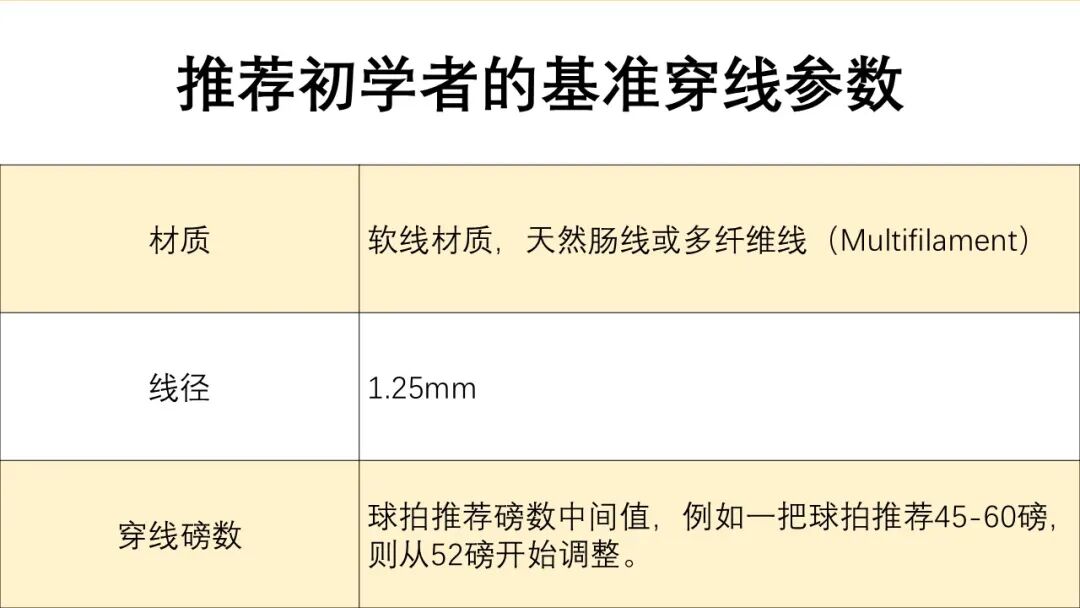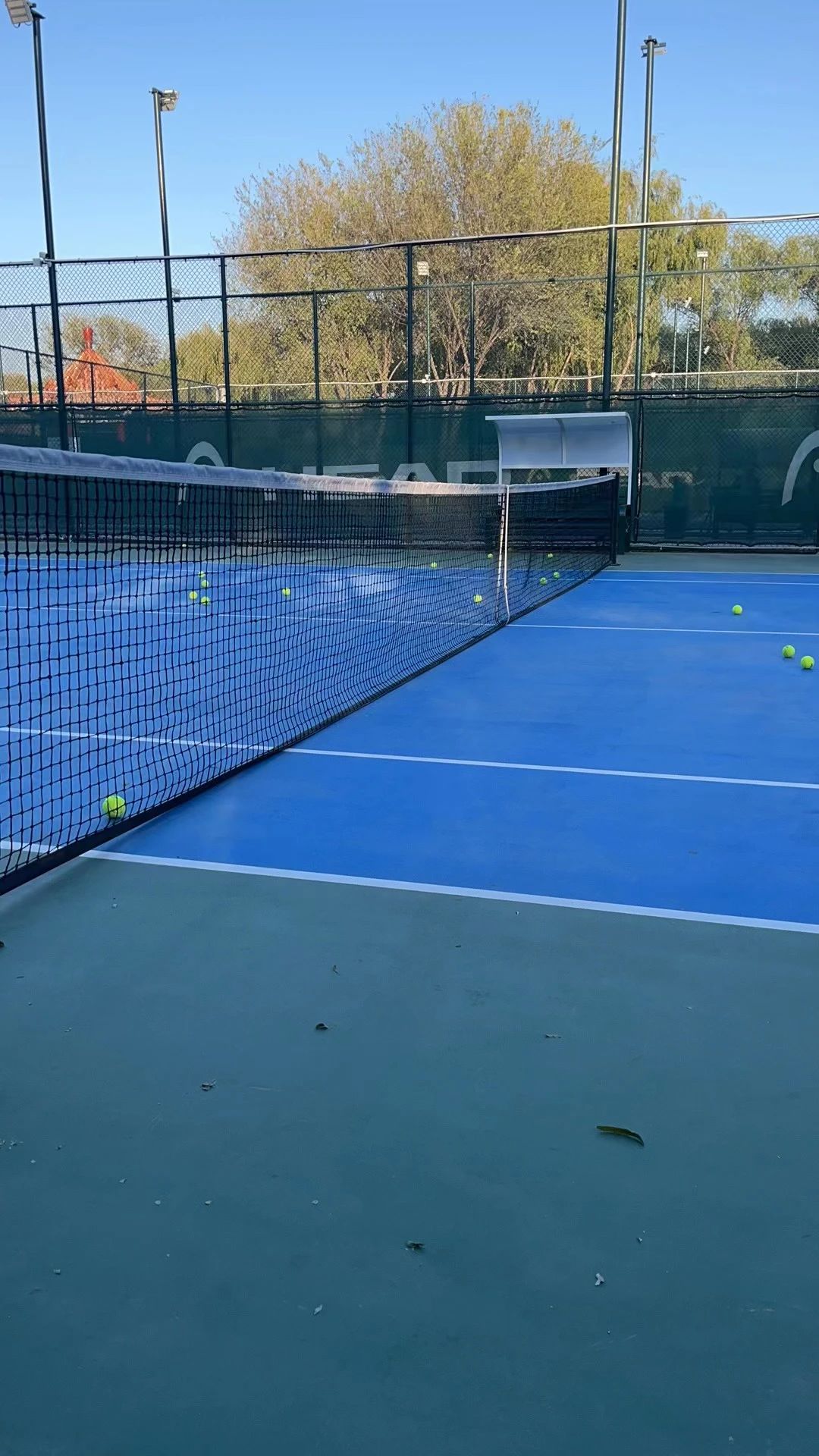The logic behind stringing a tennis racket: Say goodbye to decision paralysis

01
Writing Context
How do you choose the right tennis equipment? That’s a highly subjective question.
The subjective nature of the question means that each respondent is considering it based on their own personal experience. Ask the same equipment to different people, and you’re likely to get entirely unique pieces of advice.
That's precisely why, when students ask me what gear to buy,,I'm always careful and don't give answers directly.I’d prefer to first understand their actual situation, and only then provide input once they have a basic understanding of the equipment.Exam.After all, issues like these ultimately require you to consider your personal circumstances—your own heart knows best.
ThingIn fact,BallPlayers and equipment are always adapting to each other—each time a player changes gear, there’s an associated "adaptation cost."— Take the guitar string as an example,The greater the difference in stringing parameters between the old and new strings, the longer it will take for players to adapt to the new strings.
Currently, the internet is awash with vast amounts of knowledge about racquet stringing—conclusions like "thinner strings enhance spin, while higher tensions improve control" are readily available. However,How to leverage players' unique characteristics and turn this knowledge into personalized equipment decisions remains a relatively underexplored area of in-depth discussion.
This article aims to unravel the underlying logic of stringing, helping readers not only understand the strings themselves but also develop the ability to independently determine and adjust stringing parameters—ultimately paving the way toward the seamless integration of player and equipment.
02
Baseline Thinking (Beginner Level)
For beginnersOfBeginners should choose some standard stringing parameters to help achieve a smoother ball trajectory.And reduceLight pressure on the wrist and elbow.

Generally, I wouldBeginners are recommended to choose strings that are "softer in material and have a 1.25mm diameter," starting with the mid-range tension for their racket's stringing gauge.The reasons are as follows:
The material for soft lines is typically either natural gut or multifilament thread. To achieve the best value for money, I’d recommend opting for multifilament lines from various brands. Multifilament threads are crafted using a process that mimics natural gut—multiple strands of synthetic fibers are twisted together to create a durable, high-performance alternative.
For beginners,Soft strings effectively lower the threshold of power required to hit the ball. Additionally, their excellent shock-absorbing properties help cushion excessive impact, reducing the risk of sports injuries caused by improper technique.Once the trainee’s power chain is firmly established, switch to monofilament line to achieve greater control and durability.
Although the 1.30mm multi-fiber string offers a balanced blend of power, control, and durability, IStillWe recommend a wire gauge of 1.25 mm instead.There are two reasons for this: First, while the durability loss is minimal, it actually helps players improve their technique over time—and most players will stick with this specification for the long term. Second, the market offers an incredibly wide range of options, eliminating the common issue of the 1.30mm specification frequently being out of stock.
Higher-poundage offers good control but requires active effort; lower-poundage provides strong rebound, making it easier for beginners to focus on mastering the movement's structure. Therefore,I suggestStart with the midpoint of the recommended stringing range for your racket.For example, if a racquet is strung at a tension range of 45–60 pounds, start with 52 pounds. If the tension feels too low, reduce it by 2 pounds next time; if you’re aiming for better control, increase it by 2 pounds instead.
ForBeginnerTo put it simply,ChooseBenchmarkThread the needleParametersExtremelyImportant,Becoming familiar with this feel and mastering the active-force movement framework isAdvancedAdjusting the threading parametersBasic
03
Advanced Thought Control
As mentioned earlier, adjusting stringing parameters incurs an adaptation cost— the greater the change in parameters, the higher the player’s adaptation cost.SoToFor advanced players, inCurrently wearingFine-tuning based on the line parameters is a more economical choice.
Many amateur players find it difficult to distinguish the feel of different stringing setups, and the root cause may lie in an insufficiently scientific approach to comparison. For instance, when simultaneously altering string diameter, tension, and racket—for example, stringing a thin 54-pound line on one racket and a thicker 50-pound line on another—MoreOne changeThe effects of the variables can interfere with each other—or even cancel each other out—making it impossible to draw clear conclusions.The correct approach is to keep all other conditions constant while changing just one factor—such as using the same racket but varying either the string gauge or the tension—to truly identify any differences.
Taking the author as an example, I recently tested Head's ALU Power and Eco series of tennis strings during testing.Select two strings from the two series that both have a power attribute and a 1.25mm diameter, and string them onto two identical Ezone98 rackets at a tension of 54 pounds.
Within the month of alternating between these two rackets, I noticed that Eco strings lose their elasticity more quickly than ALU Power strings.As usage time increases, the Eco racket clearly requires more physical effort compared to the ALU Power racket.(This experimental result is based on the author's subjective perception and does not reflect product quality.)
Even with just one racket, players can still make scientific adjustments. The key lies in adopting a "controlled variables" mindset.: Adjust only one parameter at a time (such as pounds or wire diameter). While this approach may lengthen the adjustment cycle, each individual tweak is more precise.Can alsoLetPlayerFeelTo the differences brought about by threading data.HoweverForSave time, the author still isRecommendedBuyTwoThe sameRacketTesting
For advanced players, sticking to the "control the variable" approach while making subtle adjustments to stringing parameters is the most fundamental way to gain clear, actionable feedback.

